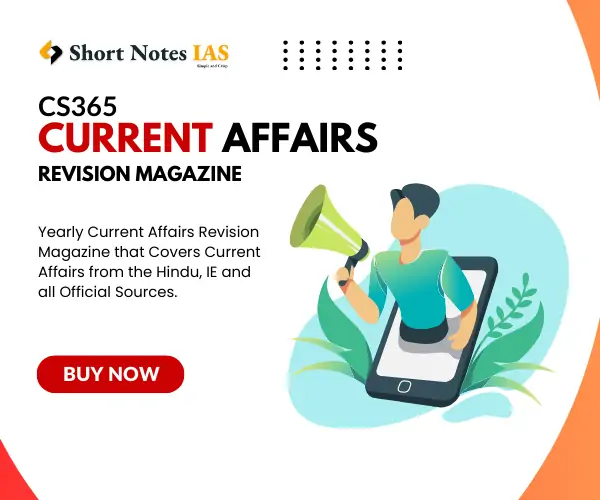
Preparing for IAS this year? Here are 15 history questions that you must try to boost your knowledge in history.
UPSC History Question 1:
Consider the following statements about “Mauryan Administration”
- It was based on “Saptanga Rajya Theory of administration”
- It was introduced by Kautilya in “Artha Shastra”
- “Maya” was one of the Sapta-Anga in the theory
Which of the above statements is/are correct?
Options:
- Only 1 is correct
- Only 1 and 2 are correct
- Only 2 and 3 are correct
- All statements are correct
Answer: Option 2 – Only 1 and 2 are correct
Solution: The Arthashastra of Kautilya is an extremely sophisticated and detailed treatise on statecraft. Arthashastra played a vital role in the making of Mauryan Administration which was highly centralised in nature. According to the Saptanga Rajya Theory, state must be consisted of seven inter-related and inter-locked Angas (limbs) or elements. These elements are (1) Swami (Lord), (2) Amatya (ministers) (3) Janapada (the territory and people) (4) Durg (fortified capital) (5) Kosha (the treasury) (6) Danda (Justice) and (7) Mitra (Ally).
UPSC History Question 2:
Arrange the following battles fought by Britishers in chronological order.
- Anglo Gurkha War
- First Anglo-Sikh War
- Second Anglo-Maratha War
- Fourth Anglo-Mysore War
Options:
- 4-3-1-2
- 2-1-3-4
- 1-2-4-3
- 3-4-1-2
Answer: Option 1 – 4-3-1-2
Solution:
Fourth Anglo-Mysore War (1798–1799)
Second Anglo-Maratha War (1803–1805)
Anglo-Gorkha war (1814–1816)
First Anglo-Sikh War (1845-1846)
UPSC History Question 3:
With reference to the ‘Communal Award’, which of the following statements is not correct?
- British Prime Minister Stanley Baldwin declared the communal award after third-round table conference.
- Award proposed to declare the depressed classes to be minorities and entitled them to reservation of seats.
Select the correct Code
Options:
- Only 1
- Only 2
- Both 1 and 2
- Neither 1 nor 2
Answer: Option 3 – Both 1 and 2
Solution: Communal Award was announced by the British PM Ramsay MacDonald in August 1932 after third-round table conference. The award was proposed to declare the depressed classes as the minorities and entitled them to separate electorates. It would have created the rift between the upper and lower caste of Hindu religion. Congress opposed the condition of separate electorates. Congress was not in favour of changing the communal award without the consent of minorities. So, Congress decided neither to accept the communal award nor to reject it.
Source- Old NCERT- Modern India.
UPSC History Question 4:
Which of the following statements regarding Gupta rule are correct?
- Civil and Criminal Laws were differentiated during this rule.
- Trader’s Guilds played a Dominant role in Trade and commerce
Select the correct Code
Options:
- Only 1
- Only 2
- Both 1 and 2
- Neither 1 nor 2
Answer: Option 3 – Both 1 and 2
Solution: Under Gupta rule, the judicial system was developed, and several law books were written. For the first time Civil and Criminal Laws were differentiated during this rule.
The Guilds controlled the industries and Crafts. Trade flourished. Foreign trade was carried on with countries like China, Indonesia and Sri Lanka.
Source: NIOS History
UPSC History Question 5:
Which of the following newspapers from pre-independence India were published in Hindi?
Options:
- Indu Prakash
- Bharat Mitra
- Amrita Bazar Patrika
- Bombay Samachar
Answer: Option 2 – Bharat Mitra
Solution – Indu Prakash – Marathi, Bharat Mitra – Hindi , Amrit Bazaar Patrika – English and Bombay Samachar – Gujrati,
UPSC History Question 6:
Which of the following statements with reference to “Ghadar Movement” are correct?
- Har Dayal, Rash Bihari Bose, Barkatullah were the Leaders of this movement.
- It involved Punjabi immigrants on the West Coast of North America
Select the correct code.
Options:
- Only 1
- Only 2
- Both 1 and 2
- Neither 1 nor 2
Answer: Option 3 – Both 1 and 2
Solution: The Ghadar revolutionaries were recruited largely from the ranks of Punjabi immigrants who had settled on the West Coast of North America at least since 1904. They were mostly debt-ridden and land-hungry peasants from the crowded areas of Punjab, especially Jullundur and Hoshiarpur, many of whom had served in the British Indian Army and had thus acquired the confidence and the means necessary for emigration. They freely accepted non-Sikhs and non-Punjabis as leaders- Har Dayal was a Hindu, Barkatullah a Muslim, Rash Bihari Bose a Hindu and Bengali. They revered leaders from all over India-Tilak, Savarkar, Khudi Ram Bose and Aurobindo Ghosh were their heroes.
Source- IGNOU (B.A. History)
UPSC History Question 7:
Which of the following statements about ‘Velu Thampi’ are correct?
- He was the Dewan (Dalawa) of Travancore Empire
- He Led a rebellion against the British forces in Travancore
- Battle of Quilon was fought between British and Velu Thampi’s men
Select the correct code.
Options:
- Only 1
- Only 2 and 3
- Both 1 and 3
- All are correct
Answer: Option 4 – All are correct
Velu Thambi was the Diwan (Prime Minister) of the Kingdom of Travancore. He rose in revolt against the British when they tried to oust him from the post of Diwan. He was also against the heavy financial burden imposed on the kingdom by the Subsidiary Alliance Treaty. Velu Thampi was able to garner good support from the people of the land against the British.
He took his own life in order to avoid capture by the British in 1809.
Source: NCERT
UPSC History Question 8:
The Practise of Sati was first referred to in which of the following inscriptions?
Options:
- Naneghat Inscription
- Eran Inscription
- Mandasor Inscription
- Junagarh Rock inscription
Answer: Option 2 – Eran Inscription
Solution: Bhanugupta’s inscription at Eran (Airana), dated 510 AD gives the first inscriptional evidence of Sati. It mentions that Goparaja, the general of Bhanugupta died in war and his widow committed sati.
Source: NCERT
UPSC History Question 9:
‘Vachana literature’ was heavily influenced by which of the following Philosophers?
Options:
- Charvaka
- Kanad Rishi
- Basavanna
- Nagsena
Answer: Option 3 – Basavanna
Source: Basavanna was a 12th-century Lingayat philosopher, statesman, Kannada poet in the Bhakti movement and a social reformer during the reign of the ‘Kalachuri-dynasty king Bijjala I’ in Karnataka, India. Basava literary works include the ‘Vachana Sahitya’ in Kannada Language. Main aim of Vachana (poetry) movement, led by Basaveshwara was welfare of all i.e. “Sakala jeevatmarige lesu”.
Source- PIB
UPSC History Question 10:
Which of the following statements about “Chola Empire” of 10th and 11th century is/are correct?
- Cholas had the strongest Navy in the Arabian and adjoining ocean during.
- Cholas carried out a Naval Expediation against the Sri Vijaya Empire of Vietnam
- Chola’s sent diplomatic and commercial embassies to Japan
Select the correct code.
Options:
- Only 1 and 2
- Only 2 and 3
- All are correct
- None are correct
Answer: Option 4 – None are correct.
Solution: Cholas had the strongest Navy in the Bay of Bengal and adjoining ocean during. Cholas carried out a Naval Expedition against the Sri Vijaya Empire of Sumatra. Chola’s sent diplomatic and commercial embassies to China
Source: NCERT
UPSC History Question 11:
Which of the following battles were fought by Babur?
- Battle of Khanwa
- Second Battle of Panipat
- Battle of Chanderi
- Battle of Chausa
Select the correct code.
Options:
- Only 1 and 3
- Only 2 and 3
- Only 2 and 4
- All of them
Answer: Option 1 – Only 1 and 3.
Solution: Battle of Khanua – Babur v/s Rana Sanga (1527).
Second Battle of Panipat – Akbar v/s Hemu (1556)
Battle of Chanderi – Babur v/s Medini Rai of Chanderi (1528)
Battle of Chause – Humayun v/s Sher Shah Sur (1539)
UPSC History Question 12:
Match the Following historical texts with their writers.
| A | B | |
| 1) | Naturalis Historia | Kalhana |
| 2) | Geography | Banabhatta |
| 3) | Harshacharita | Ptolemy |
| 4) | Rajatarangini | Pliny |
Options:
- A1-B3, A2-B4, A3-B1, A4-B2
- A1-B4, A2-B3, A3-B1, A4-B2
- A1-B3, A2-B4, A3-B2, A4-B1
- A1-B4, A2-B3, A3-B2, A4-B1
Answer: Option 4. A1-B4, A2-B3, A3-B2, A4-B1
Solution: Pliny’s Naturalis Historia which belongs to First century AD was written in Latin and tells us about Trade between India and Italy.
Potlemy’s Geography Written in Greek, provide valuable data for the study of ancient Geography and commerce
Harshacharita by Banabhatta describes early career of Harshavardhana
Rajatarangini by Kalhana is a string of biographies of the Kings of Kashmir
Source: NCERT
UPSC History Question 13:
Which of the following statements about Late Stone Age is/are correct?
- The characteristic tools of the Late Stone Age are Microliths
- The Late Stone sites are found in good numbers in Chota Nagpur, North India and South of river Krishna
Select the correct code.
Options:
- Only 1
- Only 2
- Both 1 and 2
- Niether 1 nor 2
Answer: Option 1 – Only 1.
Solution: The Late Stone Age sites are found in good numbers in Chota Nagpur, Central India and South of River Krishna.
Source: NCERT
UPSC History Question 14:
Which among the following statements is/are true with regards to Chalcolithic Culture.
- The houses were normally built by Burnt Bricks
- They used to produce Wheat and Rice crops
Select the correct code.
Options:
- Only 1
- Only 2
- Both 1 and 2
- Niether 1 nor 2
Answer: Option 2 – Only 2.
Solution: The Chalcolithic people were generally not acquainted with burnt bricks, which were seldom used. Occasionally their houses were made of mud bricks, but mostly these were constructed with wattle and duab, and seem to have been thatched houses.
Source: NCERT
UPSC History Question 15:
What was the system of revenue administration introduced by Akbar called?
Options:
- Dahsala system
- Zabti system
- Both A and B
- Neither A nor B
Answer: Option 3 – Both A and B.
Solution: Akbar instituted a new system called the dahsala. Under this system the average produce of different crops as well as the average prices prevailing over the last 10 (dah) years were calculated. The system was further improved and was later called as Zabti system.
Source: NCERT



